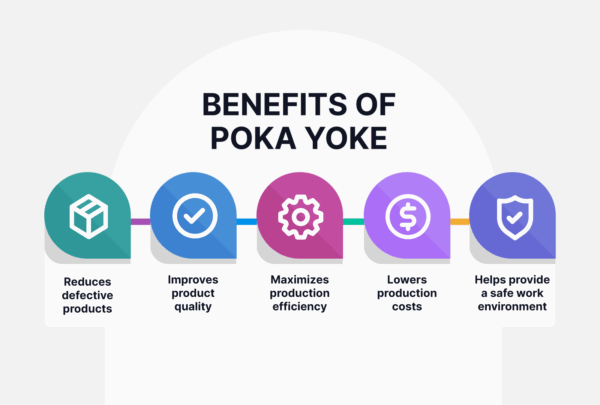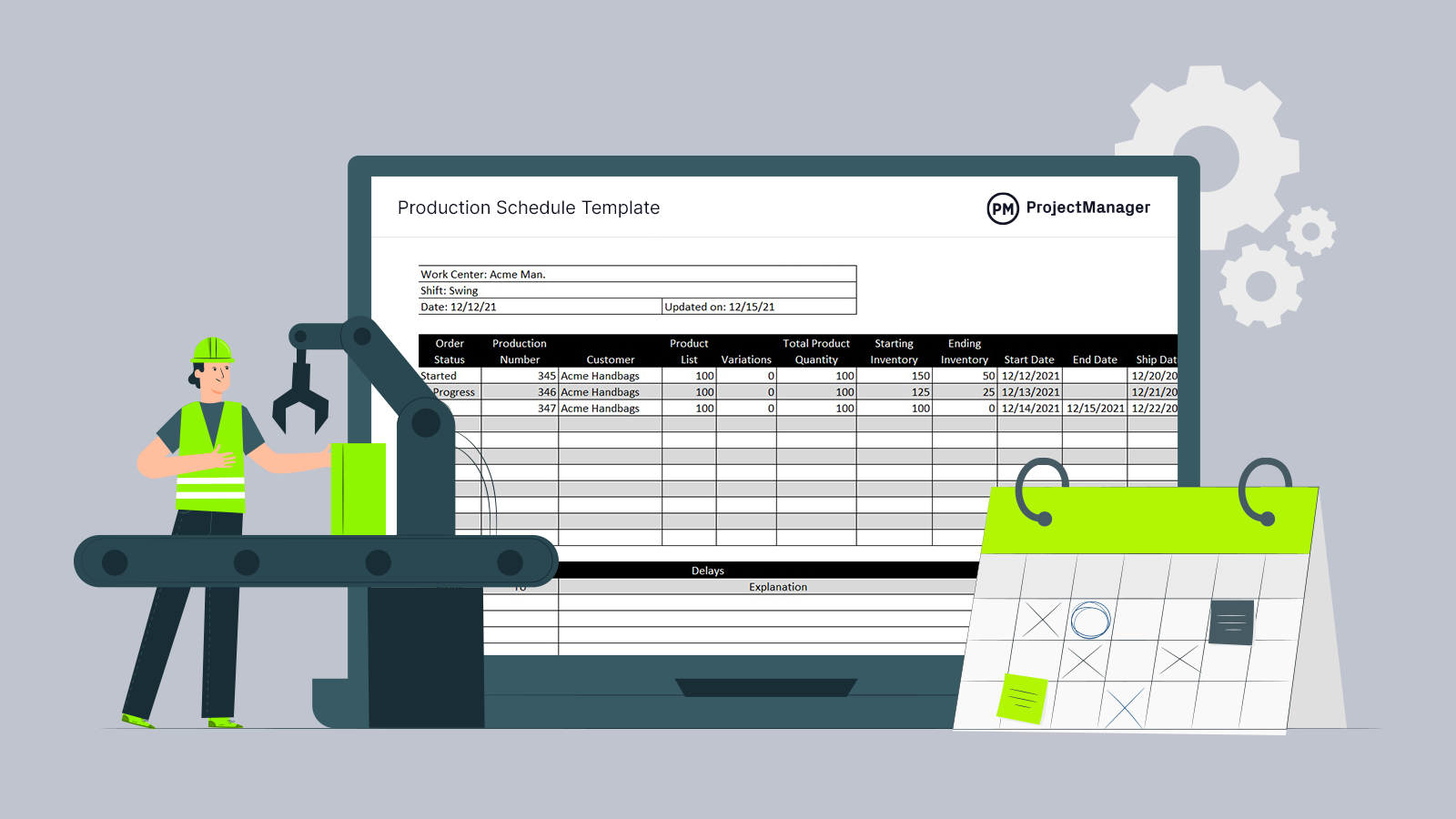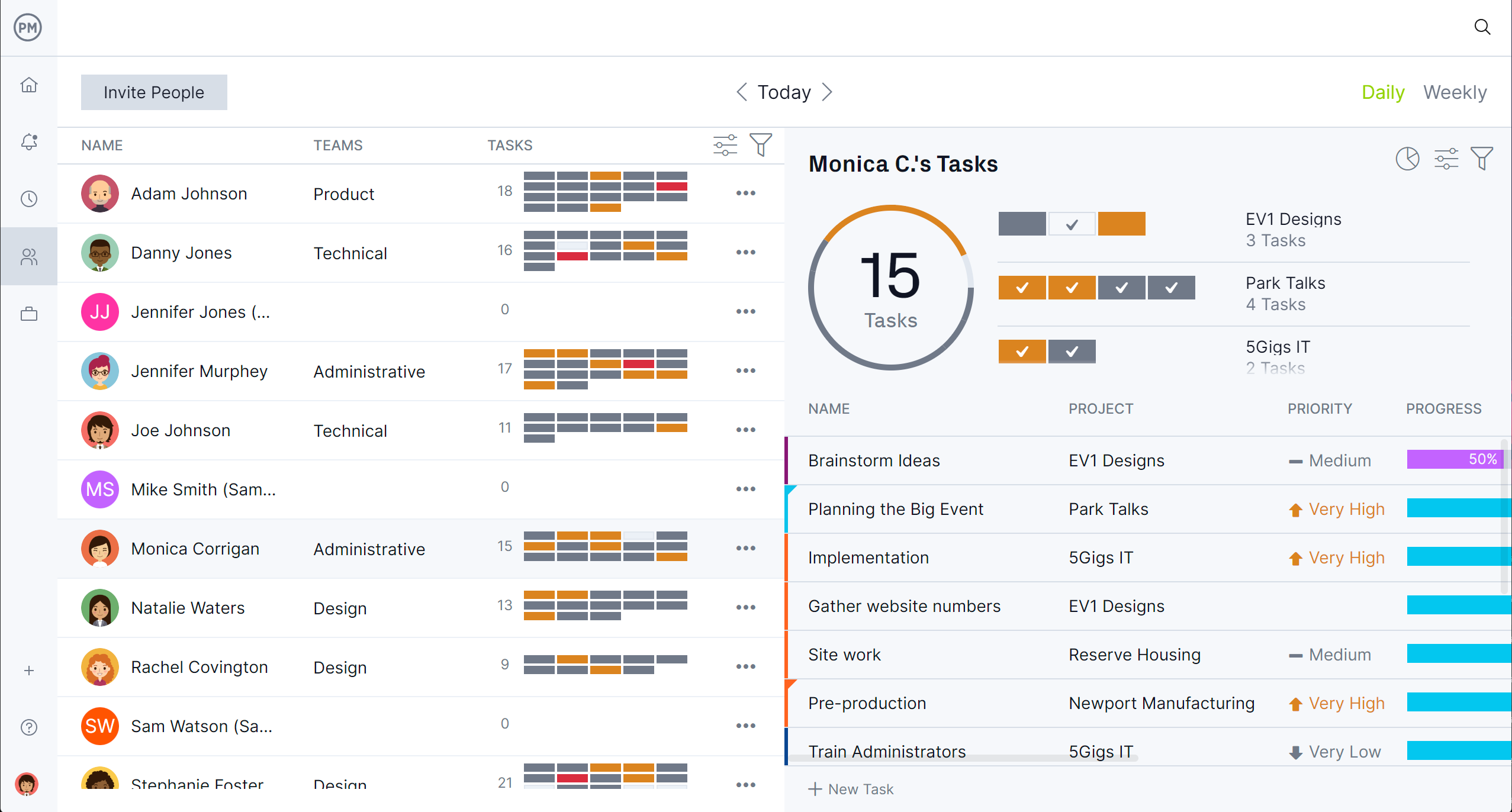Poka yoke helps manufacturers maintain consistency and quality by preventing mistakes before they occur. It’s a proactive approach that focuses on designing processes and equipment to make errors impossible.
From assembly lines to packaging operations, poka yoke encourages continuous improvement by catching potential issues at their source. By building error prevention into everyday workflows, manufacturers can boost efficiency, reduce costly rework, and ensure every product meets the highest quality standards without slowing production.
What Is the Meaning of Poka Yoke?
Poka yoke means mistake proofing and is a method used in manufacturing to prevent errors before they happen. It focuses on designing systems, tools, and workflows that make it impossible or highly unlikely for mistakes to occur. Instead of relying on inspections after production, poka yoke builds error prevention directly into the process, ensuring consistent quality, reducing rework and creating safer, more efficient operations on the factory floor.
Project management software supports poka yoke by standardizing processes, assigning clear responsibilities and tracking each production step in real time. It helps teams document best practices, automate approvals, and visualize progress through dashboards and task lists. By using digital tools, manufacturers can detect workflow bottlenecks, identify recurring issues, and implement preventive measures faster, strengthening the overall poka yoke strategy across departments and production lines.
ProjectManager is ideal for implementing poka yoke because it connects planning, execution and monitoring in one platform. Its multiple project views—like Gantt charts, dashboards and kanban boards—help teams track every step with precision. Real-time data updates keep everyone aligned while built-in resource management and automated alerts ensure no step is missed. With our software , manufacturers can integrate poka yoke principles seamlessly into daily operations to achieve continuous improvement and higher product reliability. Get started with ProjectManager today for free.


What Is Poka Yoke in Manufacturing?
Poka yoke in manufacturing is a method designed to prevent errors before they occur. It focuses on creating processes, tools and workflows that guide workers in performing tasks correctly and avoiding mistakes. By integrating error-proofing measures into every stage of production, manufacturers reduce defects, lower rework costs and improve overall efficiency. Poka yoke can involve simple devices, visual cues or automated sensors that immediately alert operators to problems. The goal is to ensure quality, maintain consistency and streamline operations while making it nearly impossible for errors to reach the final product.
Benefits of Poka Yoke in Manufacturing
Poka yoke offers manufacturers a simple, effective way to prevent mistakes and improve production. By designing processes and tools that guide workers and catch errors immediately, it reduces defects, boosts efficiency and ensures products meet quality standards. Implementing poka yoke helps teams save time, lower costs and maintain smooth operations across the factory floor without relying solely on human vigilance.


Reduces Defective Products and Rework
Poka yoke prevents errors from reaching the final product, which reduces defective items and the need for costly rework. By catching mistakes at the source, manufacturers avoid wasted materials and labor. Operators receive immediate feedback when a process deviates from standards, allowing corrections before errors propagate. This leads to more reliable production runs, fewer customer complaints and lower overall operational costs while keeping workflows efficient and consistent across every stage of manufacturing.
Improves Product Quality and Consistency
By integrating poka yoke techniques, manufacturers ensure every product meets exact specifications and quality standards. Processes are standardized and errors are minimized, which creates uniformity across production runs. Visual aids, jigs, sensors and checklists guide operators to perform tasks correctly every time. This consistency strengthens brand reputation, reduces returns and increases customer satisfaction. Overall, poka yoke supports continuous improvement and allows teams to maintain a high level of quality without slowing production or relying on manual inspections.
Related: 18 Free Manufacturing Excel Templates
Maximizes Production Efficiency and Throughput
Poka yoke helps streamline production by eliminating errors that cause downtime and bottlenecks. When mistakes are prevented, work flows smoothly and tasks are completed faster without interruptions. Operators can focus on value-added activities instead of constant inspections or corrections. Efficient processes increase throughput, reduce waste and make better use of labor and equipment. By embedding poka yoke into daily workflows, manufacturers can optimize operations, meet production targets and maintain a competitive edge without sacrificing quality or safety.
Lowers Production Costs
Poka yoke helps manufacturers reduce production costs by preventing mistakes that lead to wasted materials, labor and time. By catching errors early in the process, defective products are minimized and rework is avoided. This not only saves money but also increases overall efficiency and resource utilization. Implementing poka yoke reduces the need for extensive inspections and corrections, allowing teams to focus on value-added work and maintain consistent output while keeping operational expenses under control across all stages of production.


Helps Provide a Safe Work Environment
Poka yoke contributes to a safer work environment by reducing the likelihood of operator errors that can cause accidents. Devices, sensors and visual cues guide workers and prevent unsafe actions during production. By embedding safety into the process, potential hazards are mitigated before they become incidents. This proactive approach not only protects employees but also reduces downtime from accidents, ensures compliance with safety regulations and promotes a culture of safety where workers can focus on productivity with confidence.
15 Poka Yoke Examples Used in Manufacturing
Poka yoke can be applied in many ways to prevent mistakes and improve production quality. Manufacturers use a variety of devices and methods to guide operators, detect errors early and ensure processes are completed correctly. These practical examples show how simple changes in tools, equipment and workflows can eliminate defects, reduce rework and maintain consistent output while keeping operations efficient and safe across the factory floor.
1. Orientation Fixtures
Orientation fixtures are devices that hold parts in the correct position for assembly or machining. They prevent incorrect placement and ensure each component is aligned properly. By forcing the correct orientation, operators cannot assemble parts backwards or in the wrong sequence. This poka yoke method reduces defects, lowers rework and improves production consistency. Orientation fixtures are simple, low cost and effective tools for maintaining quality in high-volume or repetitive manufacturing processes.
2. Limit Switches
Limit switches are electrical devices that stop machines or processes when a part reaches a specific point. They prevent overtravel, misfeeds or collisions by immediately signaling when a component is out of position. Limit switches serve as a poka yoke measure by catching errors before they cause defects or damage. They are widely used in automated assembly, presses and conveyor systems to ensure safety, reduce downtime and maintain consistent production quality without relying solely on operator attention.
3. Sensor-Based Part Detection
Sensor-based part detection uses proximity, photoelectric or laser sensors to confirm the presence and correct placement of components. If a part is missing or misaligned, the system alerts the operator or halts the process. This poka yoke approach prevents defective assemblies and ensures every step is completed correctly. By integrating sensors into production lines, manufacturers can maintain high quality, reduce errors and improve throughput while giving operators immediate feedback to prevent mistakes from continuing downstream.
Related: 12 Best Production Scheduling Software for Manufacturing Projects in 2025
4. Color-Coded Components
Color-coded components use visual cues to help operators quickly identify the correct parts for each assembly step. By assigning specific colors to components, hoses or wires, mistakes are easily avoided without additional training. This poka yoke method reduces assembly errors, prevents defective products and speeds up workflow. Color coding is a simple, low-cost solution that improves accuracy, ensures consistency across production runs and supports workers in completing tasks correctly the first time.
5. Alignment Pins
Alignment pins guide parts into the correct position during assembly, preventing misalignment and incorrect installation. They ensure components fit only one way, making it impossible to assemble parts incorrectly. Using alignment pins as a poka yoke measure reduces defective products, lowers rework and maintains consistent quality. These pins are effective in high-volume production, helping operators work quickly and accurately while maintaining precise tolerances across every assembly step.
6. Torque Limiters on Tools
Torque limiters on tools control the amount of force applied when tightening screws, bolts or fasteners. They prevent over-tightening or under-tightening, which can damage parts or cause assembly failures. As a poka yoke device, torque limiters ensure each connection meets exact specifications, reducing defects and rework. This method improves product reliability, protects equipment and helps operators maintain consistent assembly quality without constantly checking torque manually, saving time and improving efficiency on the production floor.


Get your free
Production Schedule Template
Use this free Production Schedule Template to manage your projects better.
7. Barcode or RFID Scanning
Barcode or RFID scanning verifies that the correct part or component is used at each stage of production. By requiring scans before proceeding, errors are caught immediately and incorrect parts are prevented from moving downstream. This poka yoke approach ensures product accuracy, reduces rework and improves traceability across the manufacturing process. It also supports digital record keeping, making it easier for teams to track components, maintain quality standards and streamline workflows without relying solely on human memory or inspection.
8. Mechanical Interlocks
Mechanical interlocks prevent machines or processes from operating unless specific conditions are met. They ensure guards are closed, parts are in position or previous steps are completed before allowing the next action. As a poka yoke measure, interlocks reduce human error, prevent accidents and maintain consistent production quality. By stopping operations when conditions are unsafe or incorrect, mechanical interlocks protect both operators and equipment while keeping workflows efficient and reducing costly defects or downtime.
9. Error-Proof Connectors
Error-proof connectors are designed so they can only fit together in the correct orientation. This prevents incorrect wiring, tubing or assembly connections that could cause failures or defects. By making it impossible to connect components incorrectly, these connectors serve as a poka yoke method that reduces rework, improves product quality and ensures consistent assembly. They are simple, low-cost solutions that guide operators naturally, helping maintain accuracy and efficiency across all stages of manufacturing.
10. Counting Sensors for Parts
Counting sensors track the number of parts or components used in a process to ensure accuracy. If the expected count is not met, the system alerts the operator before the next step begins. This poka yoke method prevents missing components, underproduction or overuse of materials, reducing defects and waste. Counting sensors help maintain process consistency, improve throughput and provide real-time data for operators, allowing them to correct errors immediately without slowing production or compromising quality.
11. Go/No-Go Gauges
Go/no-go gauges provide a quick check to confirm whether a part meets critical dimensions or tolerances. If a component passes the gauge, it can proceed; if not, it is immediately rejected. This poka yoke tool prevents defective parts from entering assembly, reducing rework and maintaining consistent quality. Go/no-go gauges are simple, reliable and fast, allowing operators to verify accuracy without complex measurements and ensuring every product meets specifications efficiently across the production line.
12. Proximity Sensors
Proximity sensors detect the presence or absence of parts without physical contact. They ensure components are correctly positioned before a machine cycle begins. As a poka yoke measure, these sensors prevent errors, reduce defective products and protect equipment from damage. By providing instant feedback to operators or halting processes when parts are missing or misaligned, proximity sensors maintain production consistency, improve quality and increase efficiency while reducing the risk of costly mistakes on the factory floor.
13. Safety Light Curtains
Safety light curtains create invisible barriers that stop machinery if an object or operator enters a dangerous area. They protect workers and prevent production errors caused by unsafe interactions with equipment. As a poka yoke device, light curtains ensure processes only operate under safe conditions, reducing accidents and downtime. By combining safety with error prevention, manufacturers maintain continuous operations while protecting employees and maintaining product quality without relying solely on human attention or intervention.
14. Automatic Shutoff Systems
Automatic shutoff systems stop machines or processes when irregular conditions are detected, such as jams, misfeeds or equipment malfunctions. They prevent defective products, reduce damage and ensure consistent production quality. As a poka yoke method, these systems provide immediate intervention without waiting for human detection, protecting both operators and equipment. By integrating automatic shut-offs, manufacturers minimize rework, maintain efficient workflows and enhance safety while ensuring every step of production meets established standards.
15. Positioning Templates
Positioning templates guide operators to place parts accurately during assembly or fabrication. They ensure correct alignment, orientation and spacing for components, reducing errors and defects. As a poka yoke tool, templates simplify complex tasks, improve consistency and speed up production by giving clear visual guidance. By using positioning templates, manufacturers can maintain high quality standards, reduce rework and support workers in completing tasks correctly the first time without slowing down operations.
Free Related Manufacturing Templates
These free manufacturing templates help streamline processes, improve organization and support error-proofing efforts on the shop floor. Each template provides a ready-to-use framework that teams can adapt to their specific workflows, making it easier to plan, track and manage production tasks efficiently while maintaining quality and consistency.
Production Schedule Template
Download this free production schedule template to plan and organize tasks, machine usage and workforce assignments. It helps ensure all production steps are completed on time, reduces bottlenecks and supports poka yoke efforts by providing a clear roadmap for operators to follow every day.
Inventory Template
Use this free inventory template to track raw materials, components and finished goods. It helps prevent shortages or overstocking, ensures parts are available when needed and reduces errors caused by missing items, supporting smoother production and maintaining consistent quality across operations.
SIPOC Template
This free SIPOC template maps Suppliers, Inputs, Processes, Outputs and Customers for a given manufacturing workflow. It helps teams identify critical steps, potential failure points and opportunities for poka yoke implementation, ensuring processes are efficient, well-documented and error-proof from start to finish.
ProjectManager Helps Manage Manufacturing Projects and Operations
ProjectManager’s intuitive interface connects teams, tasks and data in one place, allowing managers to oversee multiple production lines, coordinate schedules and maintain quality standards. By centralizing planning and execution, our software ensures teams stay aligned, reduces miscommunication and supports error-proofing strategies like poka yoke across manufacturing workflows.
Multiple project views, including Gantt charts, kanban boards and task lists that help manufacturing teams see progress from different perspectives. Gantt charts allow managers to plan timelines, track dependencies and adjust schedules proactively. Kanban boards visualize workflow, showing which tasks are in progress, pending or completed. Task lists break down responsibilities for each operator. These multiple views ensure that every stage of production is monitored, bottlenecks are quickly identified and teams can respond to changes efficiently without losing focus on quality or deadlines.
Optimize Resources With Workload Charts and Team Page
Resource management is simplified through workload charts and the team page, which provide a clear view of who is working on what and when. Workload charts show over-allocated or underutilized team members, allowing managers to balance assignments across shifts or production lines.
The team page tracks daily and weekly progress and priority, helping supervisors allocate resources effectively. By optimizing labor and equipment usage, manufacturers can improve efficiency, reduce overtime, prevent errors and ensure each task is completed correctly and on time.
Track Performance With Real-Time Dashboards and Timesheets
Tracking tools such as real-time dashboards, AI-powered reporting and timesheets monitor labor costs and project progress. Dashboards display key metrics, progress against deadlines and alerts for any deviations. AI reporting identifies trends, predicts risks and suggests corrective actions.
Timesheets capture labor hours on the job site, helping managers calculate costs and measure productivity accurately. These tracking features allow manufacturing teams to maintain high quality, prevent errors, optimize resources and make informed decisions based on reliable, up-to-date data.
Related Manufacturing Content
There’s more to manufacturing than poka yoke. For readers who want to go beyond this, there are links below to articles on production forecasting, operations and more.
ProjectManager is online project and portfolio management software that connects teams, whether they’re in the office or on the production floor. They can share files, comment at the task level and stay updated with email and in-app notifications. Get started with ProjectManager today for free.









